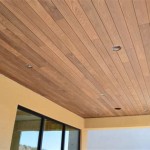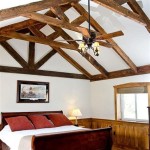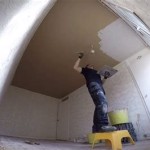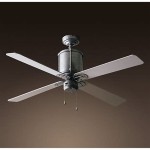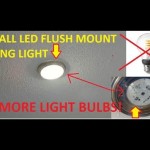Everything You Need To Know About Ceiling Light Fixtures in the Kitchen
The kitchen is the heart of the home, a space for culinary creativity, family gatherings, and social gatherings. Adequate lighting is crucial for functionality and ambiance in this vital area. Ceiling light fixtures play a pivotal role in illuminating the kitchen, enhancing its aesthetic appeal, and providing the necessary illumination for various tasks. This article will guide you through everything you need to know about choosing and installing the perfect ceiling light fixtures for your kitchen.
Types of Kitchen Ceiling Light Fixtures
A wide array of ceiling light fixture options can cater to diverse kitchen styles and needs. Here's a breakdown of the most popular choices:
1. Chandeliers
Chandeliers add an elegant touch to kitchens, particularly those with traditional or modern design elements. They come in various sizes, materials, and styles, offering flexibility to complement any décor. From ornate crystal chandeliers to sleek contemporary designs, there's a chandelier to suit every taste.
2. Flush Mount Lighting
Flush mount fixtures provide a minimalist and efficient solution for kitchens with low ceilings or limited space. These fixtures sit close to the ceiling, minimizing the visual impact while offering ample illumination. Flush mount fixtures are often chosen for their practicality and versatility.
3. Recessed Lighting
Recessed lighting, also known as can lights, offers a discreet yet powerful lighting solution. The fixtures are installed into the ceiling, creating a seamless and clean aesthetic. Recessed lighting is ideal for kitchens with high ceilings, as the light can be directed strategically to highlight key areas.
4. Semi-Flush Mount Lighting
Semi-flush mount fixtures strike a balance between the low profile of flush mount fixtures and the visual interest of chandeliers. They feature a slightly extended design with a downlight or uplight component, adding a touch of elegance without taking up too much space.
5. Pendant Lights
Pendant lights, hanging fixtures suspended from the ceiling, offer a versatile and stylish lighting option. They can be used to illuminate specific areas like the island or dining table, creating a focal point and adding visual interest to the kitchen.
6. Track Lighting
Track lighting systems provide highly adjustable and customizable illumination. The fixtures consist of a track mounted to the ceiling, with individual lights that can be repositioned to illuminate specific areas or accentuate architectural features.
Factors to Consider When Choosing Kitchen Ceiling Light Fixtures
Selecting the ideal ceiling light fixtures for your kitchen involves careful consideration of various factors:
1. Kitchen Size and Layout
The size and layout of your kitchen will influence the type and number of fixtures you need. Larger kitchens may require multiple fixtures or a combination of different types of lights. Smaller kitchens might benefit from a single, strategically placed fixture.
2. Ceiling Height
Ceiling height is a critical factor in determining the appropriate fixture types. Low ceilings might necessitate flush mount or semi-flush mount fixtures, while high ceilings allow for chandeliers, pendant lights, or recessed lighting.
3. Lighting Needs
Consider the specific lighting needs of your kitchen. Do you require bright task lighting for cooking and food preparation? Or do you prioritize ambient lighting for a cozy and inviting atmosphere? The type of fixture you choose should align with your desired lighting levels.
4. Style and Décor
The style of your kitchen should be reflected in the design of your ceiling light fixtures. Modern kitchens might favor sleek and minimalist fixtures, while traditional kitchens may complement ornate chandeliers or pendant lights.
5. Budget
Ceiling light fixtures come in a wide range of prices, from budget-friendly options to high-end designer pieces. Set a budget before you start shopping to ensure you choose fixtures that fit your financial constraints.
6. Energy Efficiency
In today's eco-conscious world, energy efficiency is paramount. Look for fixtures with LED bulbs, which consume less energy while providing bright and long-lasting illumination.
Installing Ceiling Light Fixtures
Installing ceiling light fixtures requires basic electrical knowledge and safety precautions. If you're not comfortable working with electricity, it's best to hire a qualified electrician. Here are some general steps involved:
1. Turn off the power
Always turn off the power to the circuit before starting any electrical work. Locate the circuit breaker for the fixture and switch it off.
2. Remove the old fixture
Carefully remove the old fixture from the ceiling, detaching the wires and disconnecting the electrical connections.
3. Mount the new fixture
Install the new fixture onto the ceiling, making sure it is securely attached.
4. Connect the wires
Connect the wires from the new fixture to the electrical wires in the ceiling, ensuring correct matching of colors and proper insulation.
5. Test the fixture
After everything is connected, turn the power back on and test the fixture to ensure it is working properly.
Installing ceiling light fixtures can enhance the functionality and beauty of your kitchen. By carefully choosing the right fixtures and following safe installation practices, you can create a well-lit and inviting space that caters to your culinary needs and complements your home's style.
.jpg?strip=all)
6 Types Of Kitchen Light Fixtures Compelling Homes

Kitchen Light Fixture Guide

Lighting Your New Kitchen Lumens Guide To

Illuminate Your Culinary Space A Guide To Kitchen Ceiling Lights

Everything You Need To Know About Under Cabinet Light Fixtures

45 Best Kitchen Lighting Ideas And Ceiling Light Fixtures

Design Ideas 8 Types Of Kitchen Light Fixtures

Design Ideas 8 Types Of Kitchen Light Fixtures

Illuminate Your Culinary Space A Guide To Kitchen Ceiling Lights

50 Light Fixtures To Brighten Up Your Kitchen
Related Posts

